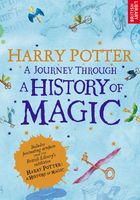
A Critical Moment for The Philosopher's Stone
J.K. ROWLING FIRST HAD the idea for Harry Potter while delayed on a train travelling from Manchester to London in 1990. Over the next five years she planned the seven books in the award-winning series and in 1995 she finally found a home for them at Bloomsbury. Harry Potter's journey had only just begun. . .
Prior to being accepted for publication by Bloomsbury, the manuscript of Harry Potter and the Philosopher's Stone was famously offered to some eight publishers, all of whom rejected it. The Bloomsbury editorial staff presented J.K. Rowling's manuscript to their colleagues in the form of a scroll, and filled it with Smarties, a nod to the leading children's book award at that time (the Smarties Prize). Nigel Newton, founder and Chief Executive of Bloomsbury, took the scroll home and gave it to his eight-year-old daughter, Alice.

Reader's report of Alice Newton, aged eight, on Harry Potter and the Philosopher's Stone
NIGEL NEWTON
Alice read the chapters, which went as far as Diagon Alley, and then gave her verdict, as preserved in this charming note. For long after she pestered her father to bring home the remainder of the manuscript. Alice's intervention was crucial: at the following day's acquisitions meeting, of which he was chairman, Nigel Newton approved editor Barry Cunningham's proposal that The Philosopher's Stone be published by Bloomsbury, leading to what is widely regarded as the most successful venture in children's publishing history.